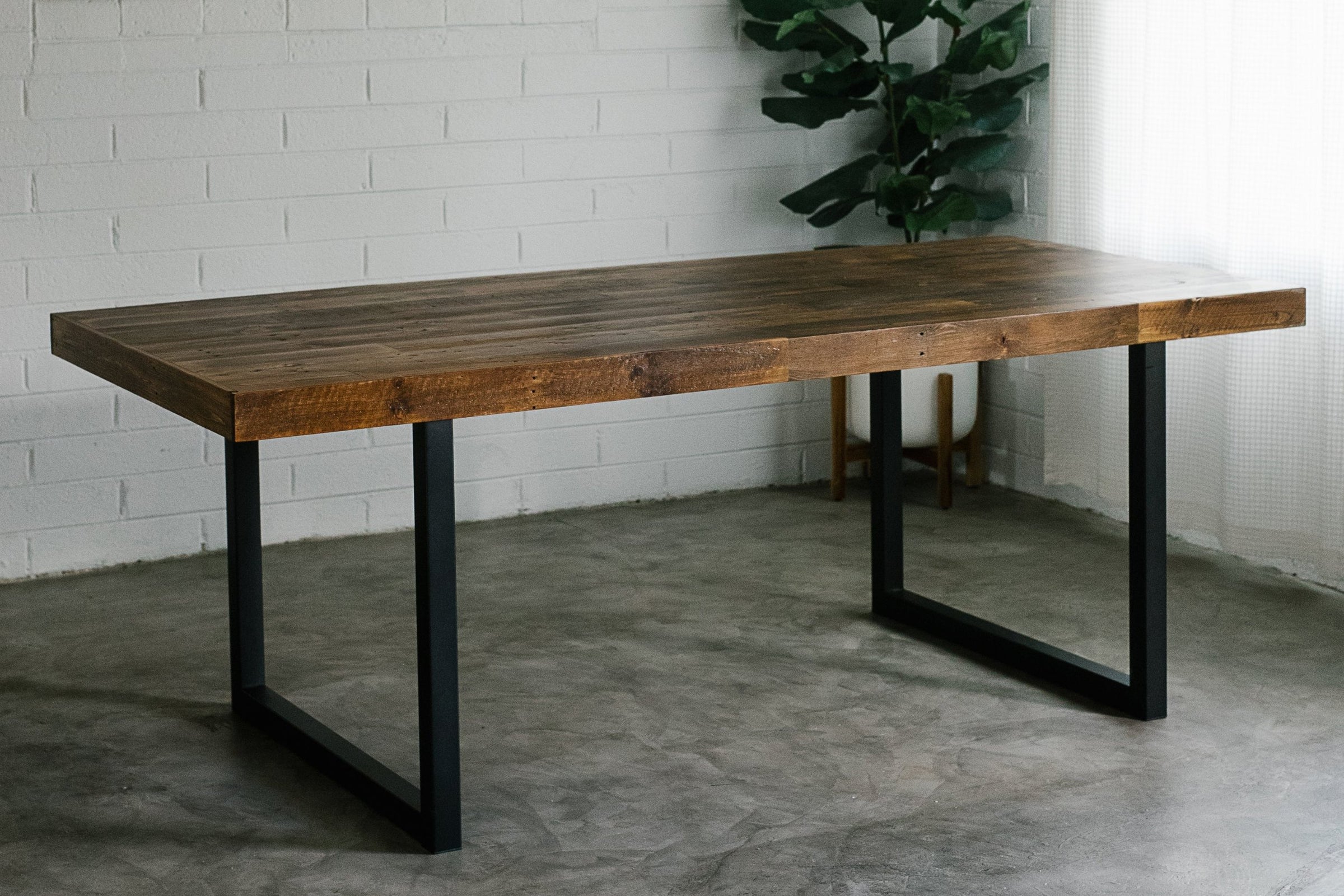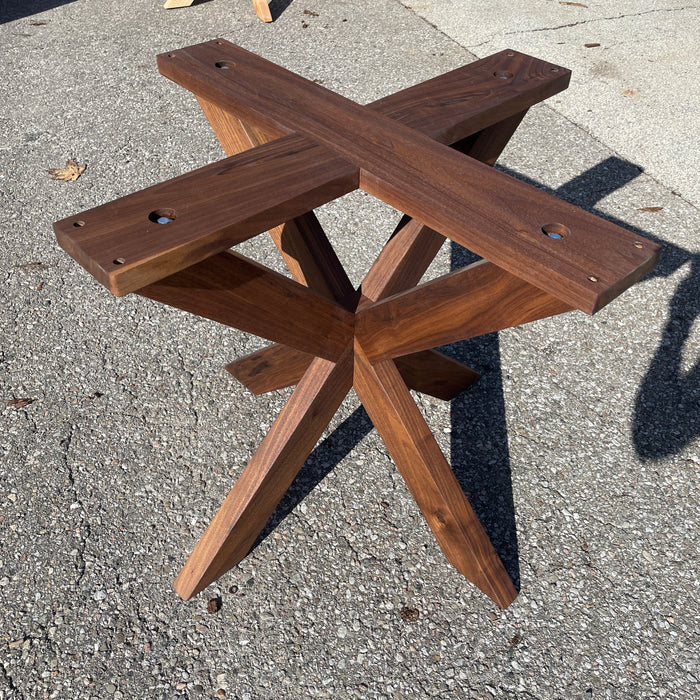Crucial Considerations for Choosing the Right Dining Table Legs Timber
Selecting the proper timber for eating table legs involves a nuanced understanding of different elements that influence both capability and visual charm. The choice of wood type, varying from durable hardwoods to extra delicate softwoods, plays an essential duty in making certain longevity and stability. In addition, considerations relating to budget plan, layout, and upkeep must be thoroughly assessed. Each of these aspects can dramatically affect the total experience of your eating room. Understanding exactly how these elements relate is crucial for making an informed choice that fulfills your details needs and preferences - Dining Table Legs Wood. What considerations will you focus on in your choice procedure?
Significance of Timber Type

Hardwoods, such as walnut, maple, and oak, are commonly chosen for their toughness and resistance to wear. These sorts of timber offer a durable foundation that can withstand daily usage, making them optimal for eating tables that experience frequent gatherings. In contrast, softer timbers like ache may be more at risk to dents and scrapes, which may not be suitable for high-traffic locations.
In addition, the selection of wood can additionally affect the simplicity of maintenance. Some timbers need normal oiling or securing to protect their look, while others might be extra flexible. Eventually, choosing the appropriate wood kind entails stabilizing aesthetic considerations with functional needs, making certain that the table legs not only look attractive but likewise stand the test of time.
Evaluating Stability and Strength
When assessing table legs, one must think about the stability and stamina they supply to the overall structure. The legs are vital in supporting the table top and making sure the eating experience is risk-free and enjoyable. A stable table is important for preventing tipping or wobbling, which can lead to spills or mishaps throughout meals.
The selection of wood kind dramatically affects strength. Hardwoods such as maple, oak, and walnut are typically extra long lasting and durable than softwoods like want or fir. In addition, the density and style of the legs play a critical role; thicker legs or those with a tapered design can use far better assistance and security.

Aesthetic Factors To Consider
While performance is paramount, the visual charm of dining table legs can not be forgotten, as they considerably affect the overall layout and setting of the eating area. The option of design, wood, and surface can enhance or take away from the table's visual impact.

Surfaces additionally play an essential role here are the findings in aesthetic appeals. An all-natural finish can highlight the timber's inherent charm, while repainted or tarnished legs can present shade and individuality right into the area. Furthermore, the percentage and scale of the legs about the tabletop and surrounding furniture needs to be thought about to ensure visual equilibrium and communication.
Ultimately, the eating table legs need to not just offer a useful objective however likewise contribute to a natural and welcoming environment, making them a vital factor to consider in the overall layout of the eating location.
Maintenance Needs
To guarantee durability and maintain the appeal of wood dining table legs, regular upkeep is crucial (Dining Table Legs Wood). Wood is a natural visit product that can be vulnerable to harm from wetness, warm, and use. Developing a regular care strategy will substantially enhance the toughness of your dining table legs.
Begin with routine dusting utilizing a soft, lint-free cloth to eliminate dirt and particles that can scrape the surface. For even more detailed cleaning, utilize a mild soap service and damp fabric, staying clear of excess wetness that might leak into the timber. It is advisable to apply a top notch wood polish or conditioner every couple of months to nurture the wood and keep its appeal.
Furthermore, consider the atmosphere where the table is placed. Stay clear of straight sunlight, as it can cause fading, and utilize rollercoasters or placemats to protect the surface area from heat and moisture. Deal with any kind of dents or scrapes promptly with proper wood filler or touch-up pens to avoid more degeneration. By adhering to these maintenance demands, you will certainly not just preserve the aesthetic allure of your wooden dining table legs however likewise extend their functional life-span.
Spending Plan and Cost Factors
Budget and expense aspects often play a vital function in the decision-making process for choosing wooden table legs. When evaluating options, it is vital to develop a clear spending plan that straightens with your total furnishings investment. The price of wood dining table legs can differ dramatically based upon the sort of craftsmanship, wood, and style complexity.
Woods such as walnut, oak, and cherry usually command higher rates because of their toughness and aesthetic allure. In comparison, softer woods like ache may be extra cost effective yet may not supply the exact same longevity. Furthermore, personalized or artisan-crafted legs can sustain extra costs, mirroring the skill and time purchased their development.
It is also vital to take into consideration the prospective long-term worth of your investment. While selecting lower-cost products might appear financially sensible originally, they may call for more regular replacement or repairs, inevitably enhancing total expenditure.
Therefore, balancing top quality and expense is essential. Focus on products that meet your visual choices while ensuring they fit easily within your spending plan, enabling you to develop a dining area that is both useful and visually attractive.
Final Thought
In final thought, choosing the proper timber look at here now for eating table legs requires cautious consideration of different aspects, consisting of wood type, stability, aesthetic appeals, maintenance, and budget plan. Inevitably, a well-informed choice will certainly improve the durability and visual appeal of the dining table, ensuring satisfaction and functionality for years to come.
Choosing the appropriate kind of timber for dining table legs is essential for both aesthetic allure and architectural integrity. Eventually, selecting the suitable wood type involves stabilizing visual considerations with useful requirements, ensuring that the eating table legs not only look appealing yet likewise stand the test of time.
It is advisable to use a high-grade timber polish or conditioner every couple of months to nourish the timber and keep its radiance.
The cost of wooden eating table legs can vary significantly based on the kind of design, timber, and craftsmanship complexity.
In verdict, selecting the ideal wood for eating table legs requires cautious consideration of different factors, consisting of wood type, security, looks, maintenance, and budget plan.